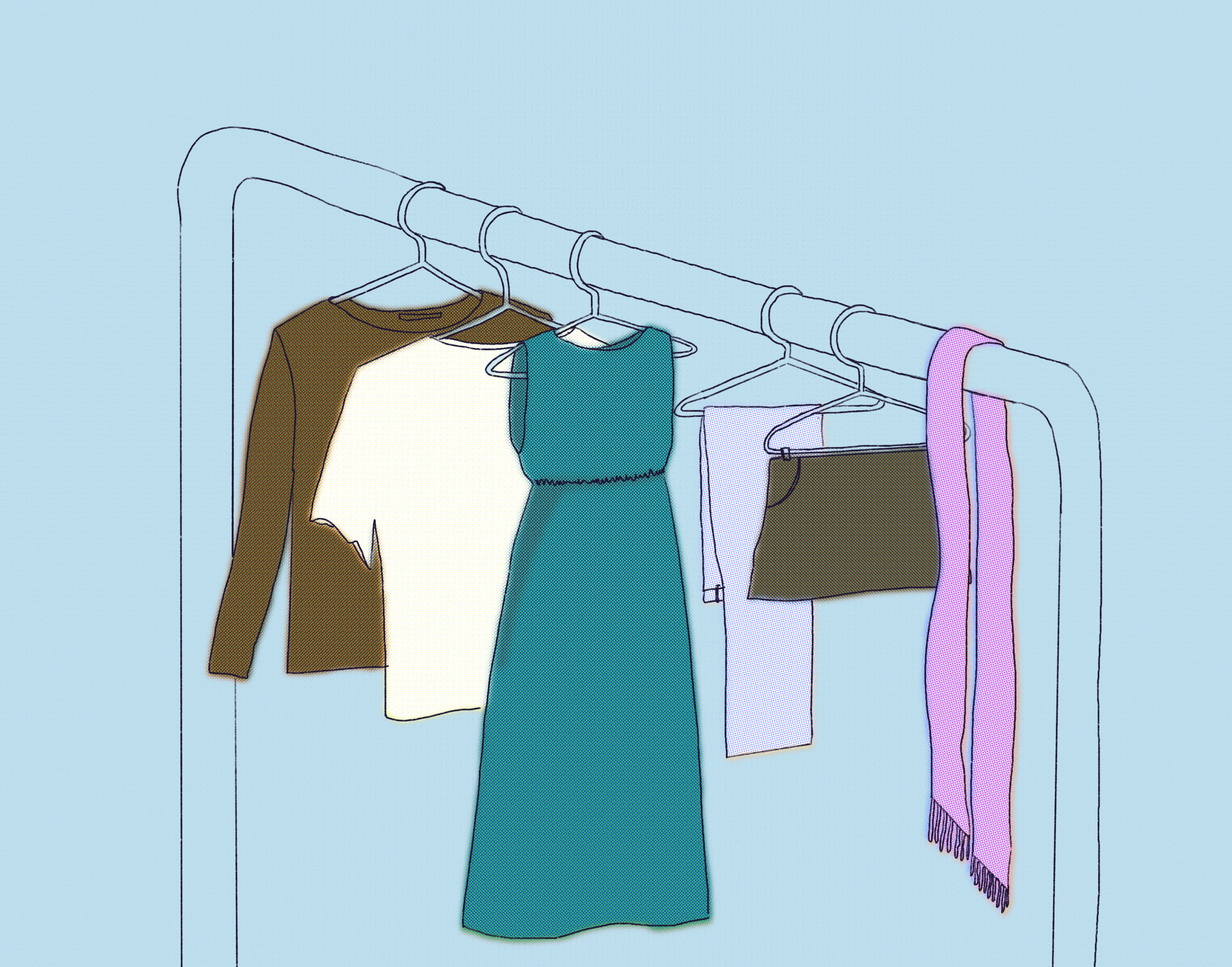
My Instagram page is overflowing with capsule wardrobe tips. I wade through a sea of beige matching sets and influencers telling me to nail down my true essence into a few closet staples. “Wear this to dress for your body type,” I’m instructed. “You should never wear these colors if you have cool undertones,” they warn.
I thought this language surrounding capsule wardrobes was part of a new trend in the age of social media, but it actually first rose to popularity 40 years ago. According to Brass, American designer Donna Karan introduced her Seven Easy Pieces in 1985, with a black bodysuit as the base layer for all outfits. Her goal was to minimize outfit stress and help career women feel more polished.
Karan’s approach to simplistic style was revolutionary for women in the workplace at the time, and it has seen a massive revival and expansion in recent years. Hundreds of articles from top news outlets like Vogue and ELLE list ways to build your perfect capsule wardrobe. These publications encourage all women to stick to easy staples so they can feel put together without overthinking their fashion.
I love that a capsule wardrobe helps many women compartmentalize clothing into a few simple steps so they can be more present in other areas of their lives. It can also prevent overconsumption by prioritizing a few timeless classics over dozens of options. However, I don’t think it’s a fashion solution for everyone.
For some, committing to a capsule wardrobe clears their mind so they can tackle more important aspects of life. For me, I feel boxed-in and suffocated when restrained to just a few pieces.
I feel most myself when my exterior reflects my interior. As a 19-year-old girl who changes her mind every minute, my inner compass is inconsistent. I want to be able to express my ebbs and flows through my aesthetic, and a capsule wardrobe leaves little room for experimentation.
My mom likes to joke that I dress in costumes. I like to say I’m just letting all the different versions of myself be seen. I am an economics major, a journalist, a yoga-lover, a ballet dancer and a friend. Every time I take an economics exam, I wear slacks and a sleek button-down. I may wake up on the first sunny morning of spring and want to wear butter yellow — a color that would never make it into my capsule wardrobe. I sometimes want to go to class in a bright mini-dress, and other times I want a long, flowing brown skirt with braids and beads. I can wear a “soccer mom” set on a Tuesday and a “ballet-core” outfit on a Wednesday.
Every person contains multitudes. I worry that with the pervasiveness of capsule wardrobes on social media, more people will be encouraged to abandon the physical expression of their internal inconsistencies in favor of a uniform donned by influencers.
The growth of clothing brands with simple aesthetics reflects the commercialization of capsule wardrobes. Aritzia, a Canadian clothing brand, grew its net revenue from 1.5 billion Canadian dollars in 2022 to 2.2 billion CAD in 2023, according to Statista. When you walk through these stores, you see rows and rows of “elevated basics” in white, black, brown and a few specialty seasonal colors. These pieces are framed as timeless classics everyone can rotate into their wardrobe, but to me, hyper-fixating on basics risks losing individuality.
By commercializing pieces that are supposed to comprise a time capsule-esque wardrobe, it becomes trendy to be trendless. There is pressure to look elegant and put together by only wearing solid neutral colors and simple shapes.
I don’t want a uniform look. I don’t always want to be polished. I can find ways to prevent overconsumption without a capsule wardrobe, like borrowing clothes or shopping at thrift stores. Fashion feels easier for me when it’s intuitive, with no day-to-day rules or restrictions.
In modernity, fashion has become an art form – a person can use their body similarly to the way a painter uses a canvas. Capsule closets are the paint-by-numbers version of fashion. I will continue to make space for internal indecision and creative expression coming through in my clothing, and I hope others feel able to do that, too.